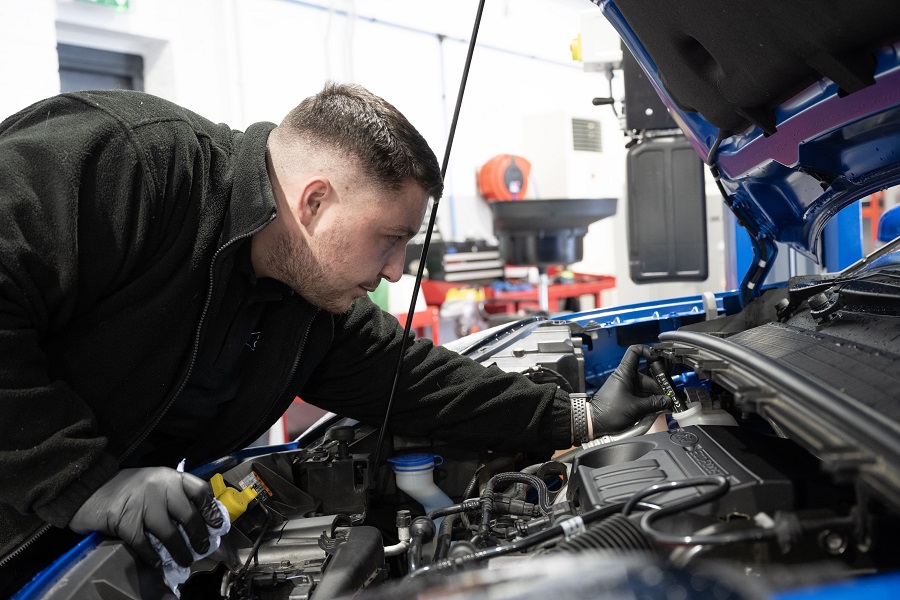Avoid costly repairs and keep your car in peak condition with our ultimate car maintenance checklist. Follow our expert guidance for optimal performance and longevity.
You love your car. If you didn’t, you wouldn’t be visiting Fast Car. Not only is your car your passion, but it’s also one of the biggest investments you’ll ever make. Generally, our cars are the second most expensive purchases (after our homes!) that we’ll make in our lifetimes, so it’s essential to keep them performing at their best.
Regular car maintenance can help ensure that it runs smoothly, is safe to drive, and delivers its full potential in terms of performance too. In this feature, we will cover why regular car maintenance is important and show you our ultimate car maintenance checklist for maximum performance. By following this car maintenance checklist guide, you can extend the life of your vehicle, avoid costly repairs, and ensure that your car runs efficiently for years to come.
Car maintenance overview
Routine car maintenance is crucial for ensuring maximum performance and prolonging the lifespan of your vehicle. But that doesn’t necessarily mean you need to have it up on the ramp or start crawling around underneath with your inspection lamp every weekend. There are several quick visual checks you make that only take a few seconds but will give you a fantastic indication as to the overall health of your car. Most of these visual inspections can be done without the need for lifting the car off the ground, and many don’t even require you to get your hands dirty, so there really is no excuse for not doing them.
Of course, for a more detailed picture of what’s going on with your car, you may need to physically get your hands dirty and start checking some of the oily bits. But this shouldn’t be a cause to put you off, and there’s no reason why you can’t carry out these checks in your home garage with some basic tools.
Oh, and a bucket and sponge are essential equipment for car maintenance too; you’ll be surprised how much difference regular cleaning and detailing can make to the overall condition of a car.
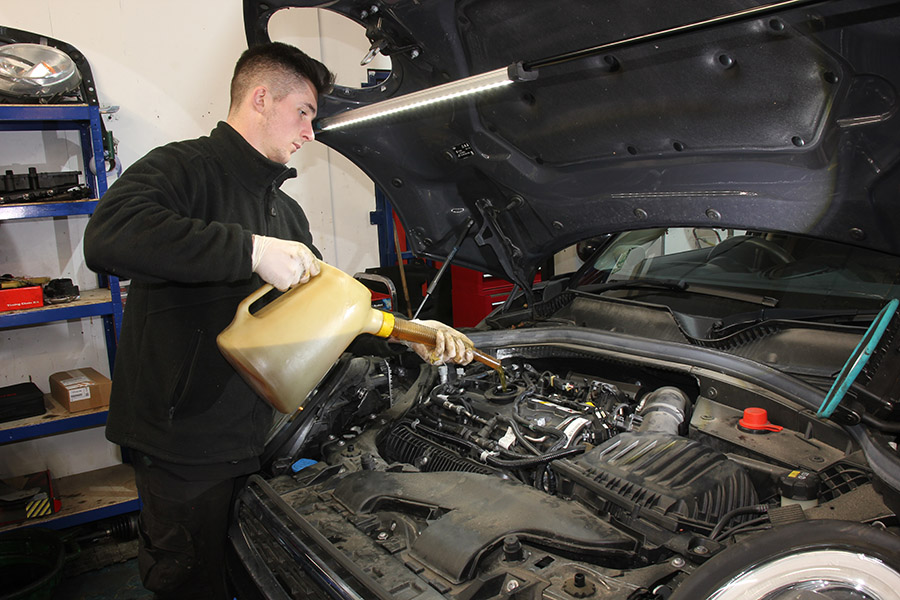
How to carry out car maintenance checks at home
We’ve selected some of the key areas that you’ll need to keep on top of as a car owners. We’ve broken down how to perform each step, and in some cases, have more detailed guides that explain the process.
How to check tire pressures
It doesn’t matter which tires you have, they all lose air over time. Having the correct pressured tires can not only improve performance, but it can also help improve fuel economy, and reduce road noise.
To check the pressures, make sure the car hasn’t been driven, and using a pressure gauge (here’s our guide to best digital tire pressure gauges) record where the air pressure is. The owner’s manual will display how much pressure the front and rear tires should be inflated to. If it’s underinflated, simply inflate until you’re reach the optimum pressure. To do this, you’ll either need to visit a garage that allows you to inflate tires, or purchase a tire inflator that uses your car’s power to inflate.
How to change headlight and other bulbs
The bulbs used on your car are another area that will need replacing. It’s unavoidable. The process for replacing each bulb is different depending on where the car the dead bulb is, and which car it is. As a result, always refer to the owner’s manual for information on how to remove the bulbs on your car.
That being said, it’s a simple DIY job for most. For headlights, you’ll either be able to access the bulbs via the rear of the headlight cluster, or you’ll need to remove the cluster entirely. Our guide on how to change headlight bulbs will help you.
How to check tire tread depth
This one is a simple car maintenance task. All you need is a tread depth gauges, which costs as little as a few dollars/pounds. You’ll need to measure towards the center of the tire, rather than the edge, but it’s worth checking the depth across the whole tire to ensure your tires are wearing evenly. If the depth is vastly different across the tire, get your wheels aligned. The legal limit for tread depth 2/32 of an inch (1.6mm).
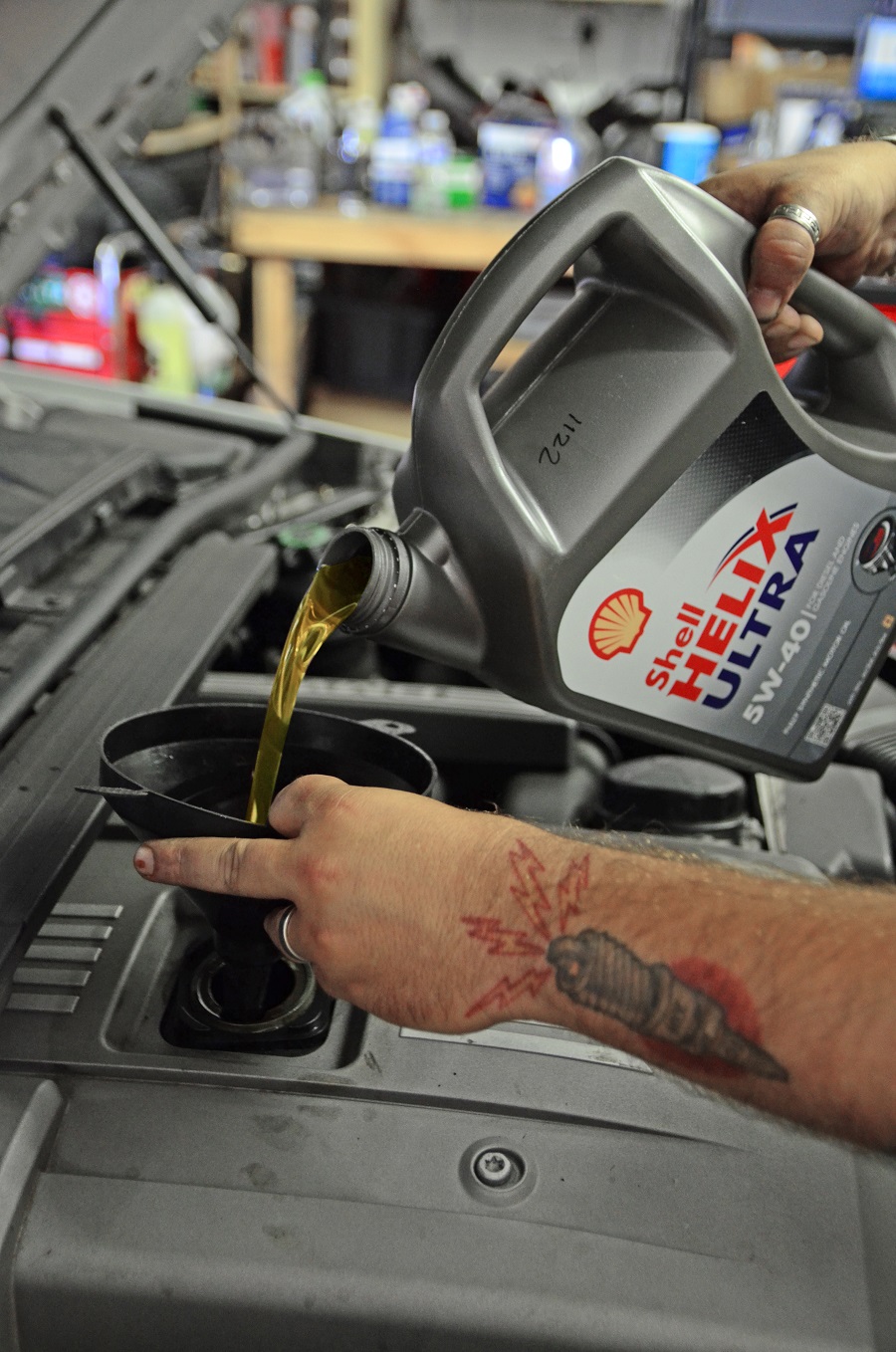
How to check engine oil level and top up
If you happen to own a newer vehicle, to check your oil level, you simply search for vehicle information within your infotainment system. This is usually linked under “vehicle”, but changes from manufacturer to manufacturer.
If you own an older vehicle, then you’ll be doing this the old fashioned way. Once the engine is cold, locate the dipstick in your engine bay, this is a long, thin piece of metal with a hooped handle which can be sometimes a little difficult to lift if its not been lifted in a while. Pull up the stick, and wipe the end of the stick clean of oil. Then, place the dipstick back into the tube, all the way in, and remove the stick again. The oil level will be a line across the bottom of the stick, which has a markings on indicating low or full. You’ll need to be within this level.
To add oil, locate the oil cap, remove it, and pour the correct oil in. How much will depend on how low on the dipstick the oil level was, if you’re hovering above the low level, add in 250-500ml, and check the level again after a few minutes. Repeat if you need more.
To save a trip to the mechanic, here’s a guide on how to change your oil at home. And if you’re looking for some top quality oil, visit out guide to the best engine oil in 2023.
How to jump start a dead battery
Knowing how to jump start a dead battery is an essential car maintenance task that car owners should know. After all, eventually, all batteries will die. The process of jump starting is easy and safe, but if you want more information, check out our guide on jump starting a car.
- With your jump cables or jump pack, connect the positive cable to the correct terminal. The terminals are usually colored Red for positive and Black for negative. The battery will either be color-coded like this, or written with a + and -.
- If you’re using a jump pack, refer to the manufacturer’s instructions on how to complete the process. Here’s our guide to the best car jump starters.
- With jump cables, connect the opposing cables to a car with a healthy battery. Clamp the negative terminal first, and follow with the positive on the healthy car. At this point, clamp the negative end of the car with the weak battery to a part of the car’s metal.
- Once connected and all ends are safe, start the engine of the car with the healthy battery. After a few seconds, you should be able to start the vehicle of the car with the weak battery. Remember to leave the car running after you’ve jump started the vehicle otherwise you’ll have to do the process again!
How to replace wiper blades
This is another simple, but essential piece of car maintenance. If your wiper blades are smearing dirty and water across the screen, then you need new ones. Each car has slightly different ways of removing wiper blades, so always refer to the owner’s manual. That being said, we’ve written a handy little guide on how to replace wiper blades that covers most applications.
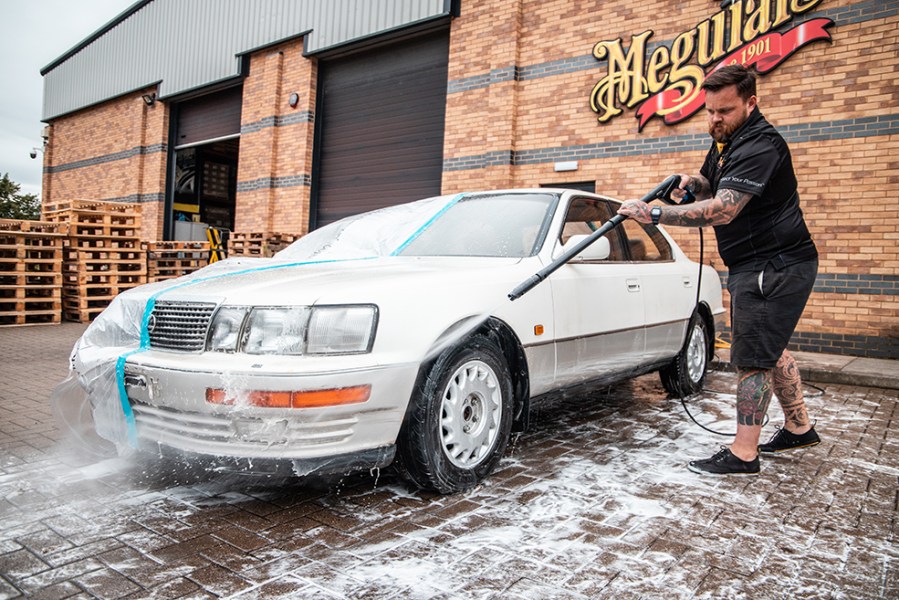
How to clean a car
Believe it or not, cleaning your car should form part of your car maintenance. Removing built up road grime, brake dust and other dirt will allow for your brakes and other components to work as they should, without anything disrupting its operation. Thankfully, we’ve got multiple guides to help you with this, from what is car detailing to a full step-by-step guide on how to detail a car.
How to refill windshield washer fluid
It sounds obvious, but making sure your windscreen washer fluid is topped up is a vital part of your car maintenance. Being able to easily clean your windshield on the move should you get caught in adverse weather, on a dirty back road, or birds have decided to target your car is a vital for safety. Not to mention it’s often illegal not to have washer fluid topped up.
To top it up, simply locate the reservoir under the hood and fill up with windscreen washer fluid. We’ve got a guide to the best washer fluids on the market should you need some buying advice.
How to check engine air filter
Vital for keeping dirt outside of your engine, the air filter overtime gets clogged up by doing its job correctly. As a result, it’s important to keep on top of regular checks during your car maintenance. In some cases these air filters are washable, but often you’ll need to replace the filter. To check its condition, locate the airbox and undo its fastenings. Remove the air filter and look at its condition. If you’re looking for a replacement, be sure to check out our guide to the best car air filter.
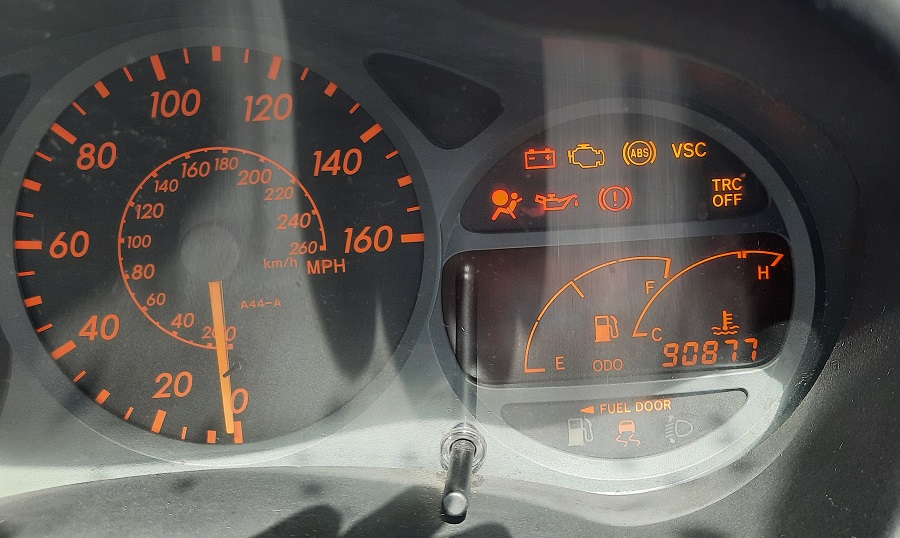
What issues would mean I would need a vehicle tune up or service?
Ignoring warning signs and delaying car servicing can lead to costly repairs and even accidents on the road. Here are some warnings signs that your vehicle needs maintenance done. These warning signs could indicate severe issues that require attention to prevent further damage.
- Dashboard warning lights
- Unusual noises
- Vibrations while driving
- Difficulty starting the engine
- Poor gas mileage (worse than usual)
- Lack of performance
- Moisture patches under the car, particularly oil.
- Strange smells including fuel.
Monthly car maintenance checklist
Frequent monthly checks are crucial for maintaining your car’s performance and safety.
- Tire pressures
- Engine oil level
- Engine oil quality
- Brake fluid level
- Windshield wiper fluid
- Battery health
Car maintenance checklist every 3 months or 3,000 miles
To keep your car running smoothly, it’s important to carry out some regular maintenance checks every three months or 3,000 miles. Anything listed in the monthly checklist section above that you haven’t checked for a few weeks should be the first job added to your three-month checklist. Building on those, it’s also a good idea to check:
- Air filters
- Transmission fluid
- Coolant levels (this can be also be done monthly if you travel frequently)
- Air-con system
- Oil change – It’s probably overkill for most modern cars, but many car enthusiasts also reckon on an oil change every 3,000 miles. It certainly won’t do any harm, especially for a car that gets driven hard or used on the track or strip at all. For regular road cars, this would likely be overkill.
Car maintenance checklist every 6 months
On top of the 1 month and 3 month car maintenance checklist, you should also now look at the following areas:
- Oil changes: Building on the quarterly check mentioned above, an oil change twice a year is quite common practice for performance cars. Again, it’s vital for any car that gets driven hard and experiences the harsh conditions of a track day or several passes on the drag strip. It won’t do any harm for a regularly driven street car either.
- Tire tread depth: It’s a good idea to take tread depth measurements of your tires every six months. Top tip: Record these and you can get a clear idea of your tire wear, which can also help inform your suspension/geometry set-up for improved performance too.
- Check for leaks: It’s worth getting under the hood and having a good poke around every six months or so to check for any signs of oil/fluid leaks, the condition of any rubber belts or hoses, and check for any damage or corrosion to vulnerable components such as radiators, oil coolers, intercoolers or pipework. While you’re under there, check the wiring harness too, keeping an eye out for any broken clips or badly routed wires that may lead to chaffing issues further down the line.
- Fuel injector cleaner: Some owners like to run a fuel injector cleaner every six months or so to help maintain the correct spray pattern and to keep the fuel system nice and clean. This is particularly useful for direct fuel-injected motors, as poor spay patterns and unwanted contaminants in the combustion chamber can lead to LSP (low-speed pre-ignition), which can be fatal for engines.
Yearly vehicle maintenance checklist
Yearly checks should coincide with your annual tune up or service. A professional should be carrying out a thorough inspection as part of the process. But it never hurts to carry out an annual inspection yourself too. Most countries require cars to pass an annual test for roadworthiness, and these requirements can form a fantastic base for your yearly maintenance checks too.
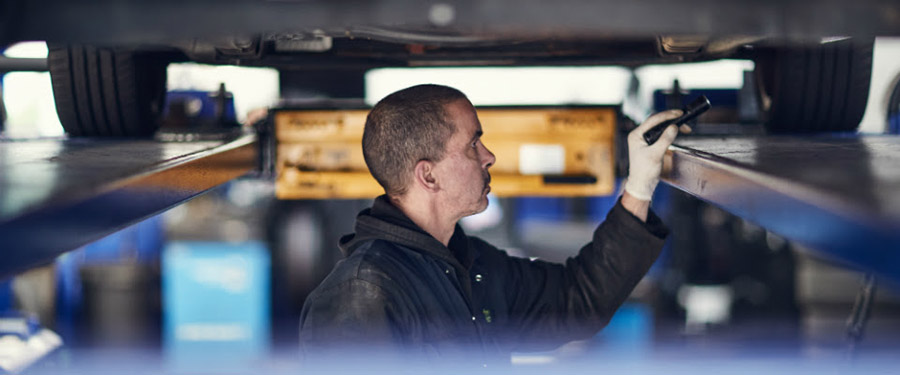
Why is regular car maintenance important?
No matter what make or model you drive, regular car maintenance is crucial to ensure the longevity and optimal performance of any vehicle. Neglecting maintenance will not only affect performance, but it can lead to costly repairs and breakdowns too. Beyond the financial costs, failing to maintain your car can also be dangerous, putting you and your passengers at risk.
By performing regular maintenance, you can ensure your car is always running at its full potential. Additionally, keeping up with maintenance may increase the resale value of your vehicle should you ever decide to sell it. In short, regular car maintenance is a small investment that can pay off in big ways over time.

